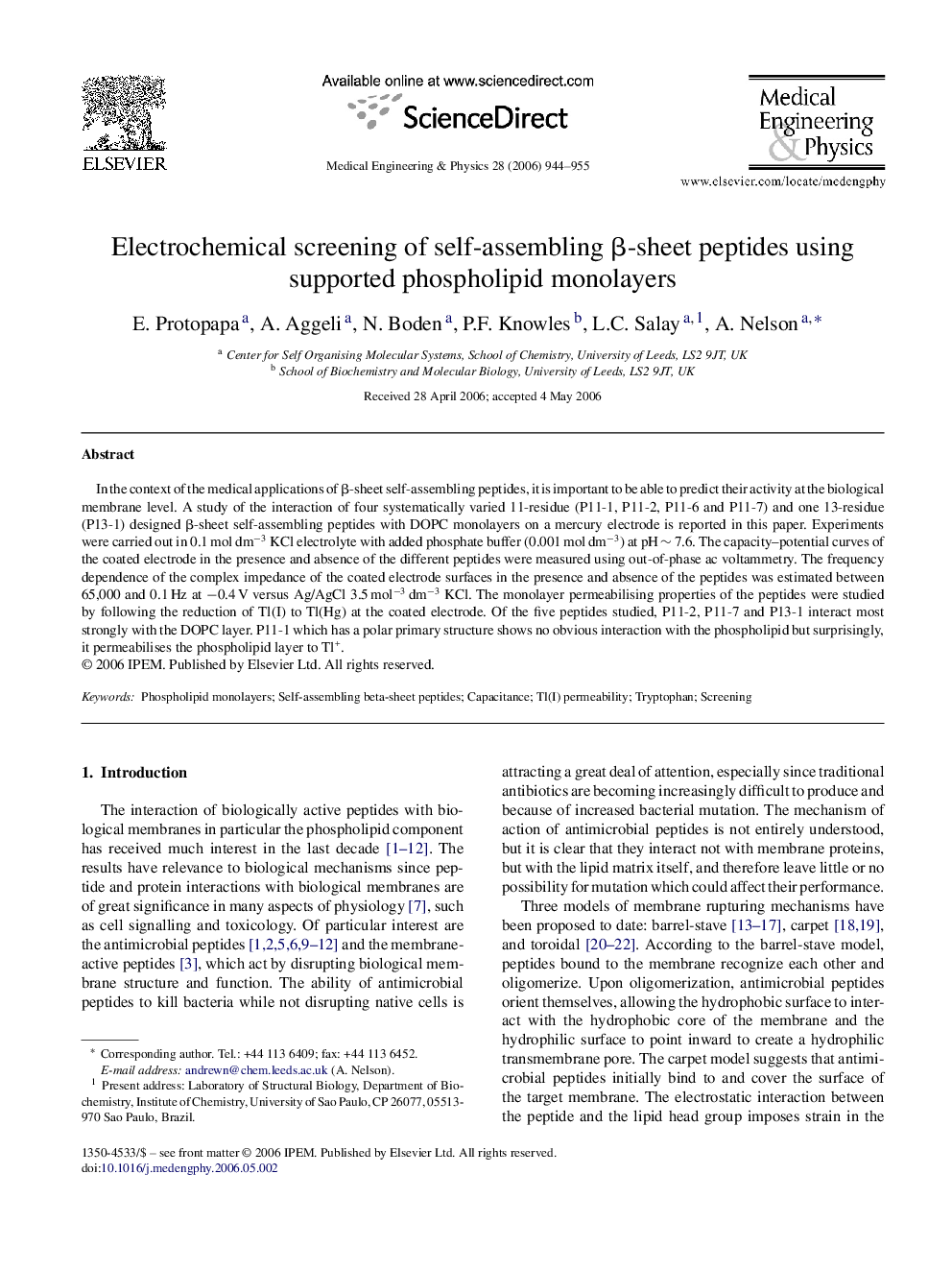| Article ID | Journal | Published Year | Pages | File Type |
|---|---|---|---|---|
| 877229 | Medical Engineering & Physics | 2006 | 12 Pages |
In the context of the medical applications of β-sheet self-assembling peptides, it is important to be able to predict their activity at the biological membrane level. A study of the interaction of four systematically varied 11-residue (P11-1, P11-2, P11-6 and P11-7) and one 13-residue (P13-1) designed β-sheet self-assembling peptides with DOPC monolayers on a mercury electrode is reported in this paper. Experiments were carried out in 0.1 mol dm−3 KCl electrolyte with added phosphate buffer (0.001 mol dm−3) at pH ∼ 7.6. The capacity–potential curves of the coated electrode in the presence and absence of the different peptides were measured using out-of-phase ac voltammetry. The frequency dependence of the complex impedance of the coated electrode surfaces in the presence and absence of the peptides was estimated between 65,000 and 0.1 Hz at −0.4 V versus Ag/AgCl 3.5 mol−3 dm−3 KCl. The monolayer permeabilising properties of the peptides were studied by following the reduction of Tl(I) to Tl(Hg) at the coated electrode. Of the five peptides studied, P11-2, P11-7 and P13-1 interact most strongly with the DOPC layer. P11-1 which has a polar primary structure shows no obvious interaction with the phospholipid but surprisingly, it permeabilises the phospholipid layer to Tl+.
